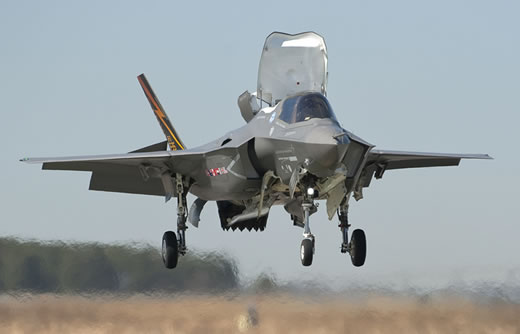The delays in development and testing have increased the cost of the aircraft. In an effort to control the escalating cost the Pentagon negotiated a shift from previous cost-plus-incentive fee which was optimized for the development phase, into price incentive scheme, challenging the manufacturer with more responsibility of cost controll.
Lockheed Martin has agreed to modify the current low rate initial production Lot IV Low-Rate Initial Production (LRIP) aircraft contract to a fixed-price-incentive (firm target). Under the new arrangement, Lockheed and the Pentagon share on a 50-50 basis all overruns topping the F-35’s “target price.” Lockheed would be required to absorb the entire overrun once the price exceeds an upper-limit “ceiling.”

Subsequently the company was awarded about $3.5 billion modification covering the procurement of 31 aircraft. Including the long-lead funding previously received, the total contract value for LRIP 4 is $3.9 billion. This contract represents an average cost of $105-109 million per A and B type aircraft, excluding long lead funding, or $125 per aircraft on average, including all costs. This cost is well above the Pentagon estimated rate, yet, this amount allocates the necessary funding for flight testing, and other developmental activities that may not be necessary in future procurement.
The current lot includes 10 conventional take-off and landing aircraft for the U.S. Air Force (31.6% of the cost); 16 short take-off vertical landing (STOVL) aircraft for the U.S. Marine Corps (48.4%); one STOVL aircraft for the United Kingdom Royal Navy (3.4%); and four carrier variant aircraft for the U.S. Navy (16.6%). The LRIP 4 order is in addition to 31 F-35s contracted under LRIPs 1-3, three of which already have exited Lockheed Martin’s mile-long factory in Fort Worth. Nineteen test aircraft also have rolled out. The U.S. and eight nations partnering in the project plan, in addition to Israel, plan to acquire more than 3,100 F-35 fighters.
With more aircraft joining the combined test force, the F-35 flight test program gained momentum and, compared to the delays of past years, is now exceeding schedule. Overall, the program has completed 321 flights this year, and is working toward the total of 394 test flight this year. Particularly impressive is the status of the Conventional Takeoff and Landing (CTOL) variant and the carrier variant (CV). The Short Takeoff and Vertical Landing (STOVL) variant F-35B is still behind schedule. The F-35B recently performed the first supersonic flight at Mach 1.3, this variant also achieved 7 g’s, the highest load condition to date and maximum design g’s for the STOVL.
However, a significant issue that could further delay this type’s progress are cracks developing in the rear bulkhead of the F-35B. Cracks developed on an F-35B ground test plane undergoing fatigue testing after the plane had been subjected to stresses equivalent to about 1,500 hours of flight time. This level is significantly short of the 8,000 hour fatigue limit these structures are designed to withstand.
On a parallel path, the first F-35B Lightning II fitted with ‘Block 1’ avionics software flew on its first flight November 5, 2011. This fourth pre-production aircraft (BF-4) uses the ‘Block 1’ avionic software, enabling most of the primary sensors on the F-35. This software forms the foundation of all subsequent software blocks for the F-35.It enables information fusion from the F-35’s radar, electronic warfare system, distributed aperture system, electro-optical targeting system and other sensors, and provides initial weapons-release capability.
Prior to the integration in the F-35 the new software has been undergoing airborne testing since May on the Cooperative Avionics Test Bed (CAT-bird) Boeing 737 modified to simulate the new fighter plane. This fully equipped fighter will now be able to test and validate the full avionic system in flight.
More F-35 recent news: New prospects for F-35?




















